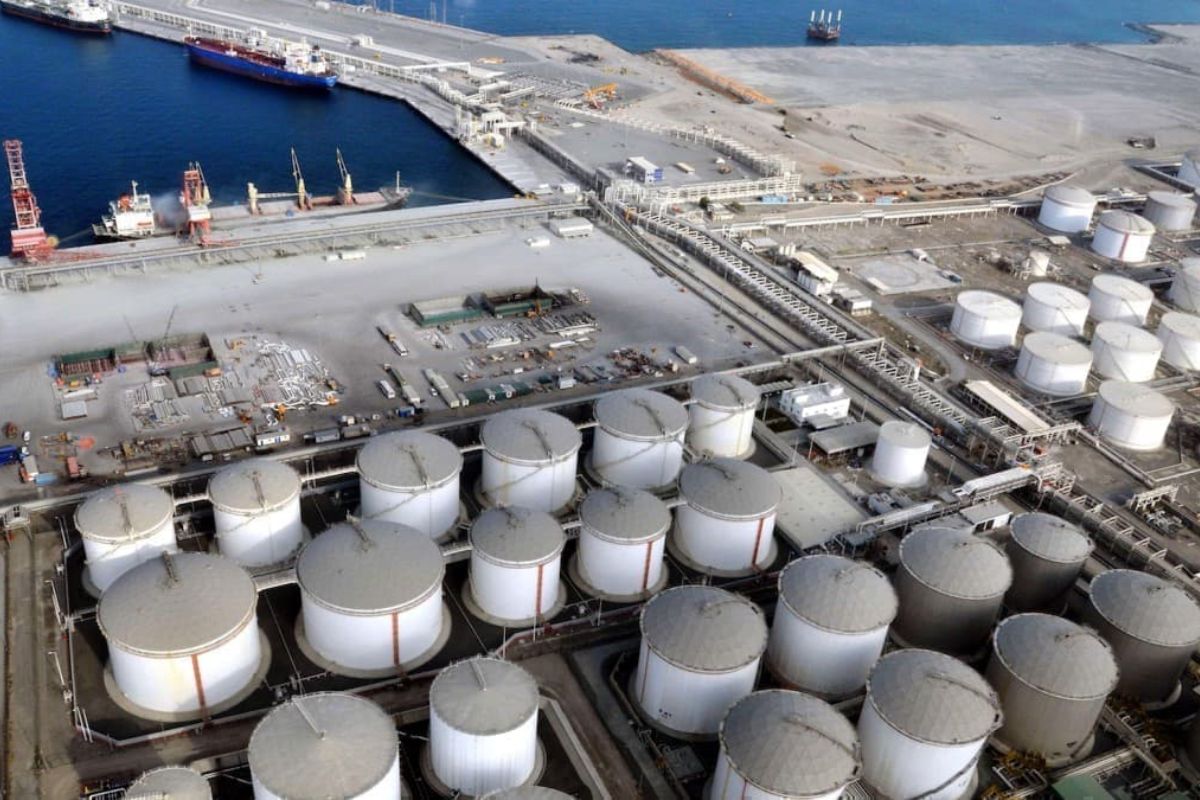US Crude Surges: The recent surge in U.S. crude inventories has sent shockwaves through the oil market, triggering a significant drop in prices. This sudden turn of events has left analysts and investors questioning the strength of demand in the face of mounting supply.
As the market grapples with this influx of crude, various factors are coming into play, from supply adjustments by oil-producing nations to projections on fuel demand. The implications of this unexpected surge in U.S. crude inventories are far-reaching, raising concerns about the stability of oil prices in the near future.
Key Takeaways
- Unexpected surge in U.S. crude inventories led to a sharp decline in oil prices.
- Market uncertainty heightened as doubts about demand and supply balance emerged.
- Refinery disruptions and lower utilization rates contributed to the inventory build-up.
- Investor sentiment shaken, closely monitoring OPEC+ decisions for price direction cues.
Oil Prices Fall on Surge in U.S. Crude Inventories: Doubts on Demand Strength
The sudden drop in oil prices was a direct result of the unexpected surge in U.S. crude inventories, sparking doubts about the strength of demand in the world’s largest economy. This surge, larger than anticipated, sent shockwaves through the market, leaving investors and analysts questioning the resilience of oil demand in the face of such a significant inventory build-up. The unexpected nature of this surge has rattled the oil market, casting a shadow of uncertainty over future price movements.
Also Read: Oil Prices Edge Up 1% Amidst Significant US Crude Withdrawal and China’s Stimulus Hopes
The surge in U.S. crude inventories has not only led to a decline in oil prices but has also exposed the vulnerability of the oil market to sudden shifts in supply and demand dynamics. The market, already grappling with geopolitical uncertainties and production challenges, now faces the added pressure of weakening demand signals from the U.S. The implications of this inventory surge extend beyond the immediate price drop, raising concerns about the overall health of the global oil market and its ability to weather unforeseen disruptions.
Market Response to Inventory Surge
In the wake of the unexpected surge in U.S. crude inventories, the market has been gripped by a frenzy of uncertainty and volatility, with oil prices plummeting as investors scramble to assess the implications of this sudden shift in supply dynamics. The sudden increase in inventory levels has sent shockwaves through the market, causing a chain reaction of sell-offs and panic among traders. The downward pressure on prices reflects a lack of confidence in the current supply-demand balance and has spurred a rush to secure profits before potential further declines.
| Factors Contributing to Market Response | Impact on Oil Prices | Investor Sentiment |
|---|---|---|
| High inventory levels | Negative | Bearish |
| Uncertainty about demand strength | Negative | Cautious |
| Increased volatility | Negative | Anxious |
Investors are now on edge, closely monitoring any developments that could offer clues about the future direction of oil prices. The market remains highly sensitive to any news regarding supply levels, demand trends, and geopolitical factors, making for a tense and unpredictable trading environment.
Factors Contributing to Inventory Build
Amidst the tumultuous aftermath of the unexpected surge in U.S. crude inventories, the spotlight now shifts towards dissecting the critical factors fueling this unprecedented inventory build. The Energy Information Administration‘s (EIA) revelation of a staggering 12 million barrel increase in U.S. crude inventories, surpassing analysts’ modest forecast by a significant margin, has sent shockwaves through the oil market. The surge, bringing total inventories to 439.5 million barrels as of February 9, has sparked concerns about the underlying demand dynamics.
One of the primary culprits behind this inventory surge is the lower refinery utilization rates, exacerbated by the shutdown of BP’s Whiting plant in Indiana. This unexpected disruption in refinery operations has thrown a wrench into the delicate balance of supply and demand, pushing the already inflated crude inventories to new heights. As the oil market grapples with this unforeseen turn of events, the need for a comprehensive reassessment of supply chain resilience and demand forecasting has never been more imperative.
Supply Adjustments by Oil-Producing Nations
Supply adjustments by key oil-producing nations are poised to shape the future trajectory of global oil markets, with Kazakhstan and Iraq taking decisive steps to realign their production levels in accordance with OPEC+ commitments.
- Kazakhstan’s Bold Move:
Kazakhstan’s announcement to offset its oil overproduction demonstrates a commitment to compliance with OPEC+ agreements, setting a precedent for other nations to follow suit in restoring market stability. This proactive stance signals a shift towards greater accountability within the oil-producing community.
- Iraq’s Promise of Review:
Iraq’s pledge to review its production levels and address any excess output signifies a willingness to adapt to changing market dynamics. By prioritizing adherence to OPEC+ voluntary cuts, Iraq is positioning itself as a responsible player in the global oil arena.
- March OPEC Meeting Anticipation:
Analysts are eagerly awaiting the March OPEC meeting, recognizing it as a pivotal moment that could determine the direction of oil prices. The decision to extend output curbs or not will have far-reaching consequences, injecting uncertainty and speculation into an already volatile market.
Fuel Demand and Analyst Projections
The resurgence in travel activity and the consequent increase in oil demand signal a promising trajectory for the fuel industry, capturing the attention of analysts and stakeholders alike. As fuel demand stabilizes, propelled by a return to pre-COVID-19 air travel levels, particularly highlighted during China’s Lunar New Year holiday, the outlook for the industry appears increasingly optimistic. Analysts at JPMorgan have observed a notable uptick in oil demand, with a significant 1.6 million barrels per day surge in the first half of February compared to January.
This surge not only underscores the revival of travel activities but also hints at a potential escalation in demand in the near future. The data suggests that the fuel industry is on the brink of a substantial rebound, potentially heralding a period of growth and profitability. With such robust demand projections, stakeholders and investors are likely keeping a keen eye on developments in this sector, anticipating lucrative opportunities on the horizon.
Conclusion Of US Crude Surges
The surge in U.S. crude inventories has sent shockwaves through the oil market, causing prices to plummet. Doubts on demand strength have further fueled the downward trend.
With supply adjustments by oil-producing nations and uncertain fuel demand, analysts are projecting a bumpy road ahead for the oil industry.
Investors and consumers alike should brace themselves for potential volatility and prepare for possible economic repercussions.
Our Reader’s Queries
Q1 What is the reason for crude oil price fall?
A Crude oil prices are declining due to a worldwide economic slowdown and concerns about a recession, according to the International Monetary Fund.
Q2 What caused the price of oil to drastically drop?
A An oversupply of oil leads to a significant drop in oil prices. Economic downturns, such as the Great Recession in 2008, can also result in a substantial decline in gas and oil prices. Although the interplay of supply and demand influences oil prices, it is, in fact, oil futures that determine the price of oil.
Q3 Why oil prices fell in 2023?
A Crude futures experienced a loss exceeding 10% in 2023, characterized by a year of volatile trading. This marked their most significant annual decline since 2020, amidst geopolitical tensions in the Middle East and uncertainties regarding the oil output levels of major global producers.




